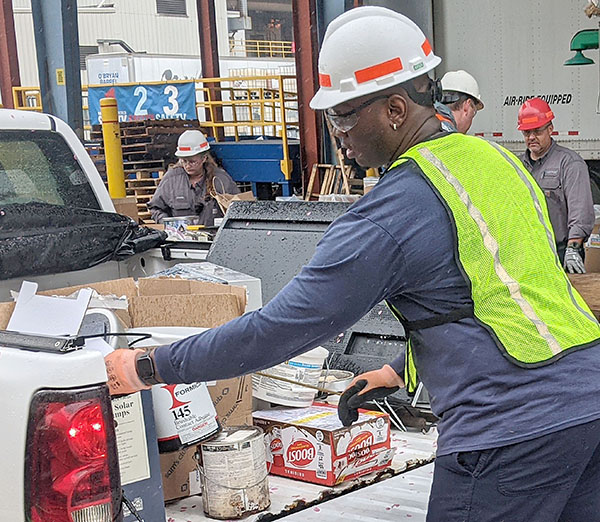In the past we’ve discussed several of the criteria for identifying hazardous wastes including hazardous waste characteristics and wastes which are listed. RCRA monitors a long list of elements and solid wastes that are considered environmentally hazardous because they exhibit characteristics of corrosivity, toxicity, ignitability, or reactivity.
On this list there are eight RCRA monitored metals, known as the RCRA 8s. These eight metals include: arsenic, barium, cadmium, chromium, lead, mercury, selenium and silver. Each metal is discussed further below with the designated degrees of concentration identified for each metal.
Arsenic
The first RCRA 8 metal is arsenic. While small quantities of arsenic can be found in food, water, and household products it becomes very dangerous at high concentrations. At 250 parts per million (ppm) it becomes toxic. As you may know, arsenic is monitored by RCRA because it is toxic to humans. The Environmental Protection Agency (EPA) hazardous waste code for arsenic is D004, and its allowable limit in waste is 5 ppm.
Barium
Barium is a rather common element which has a multitude of applications. Barium is used as rat poison, in the coloring of fireworks, and in the productions of items like fluorescent light bulbs and tiles. It can often be found on the tips of drill bits at oil refineries. “Barium most commonly finds its way to humans through well water supplies and near oil refineries. Barium’s EPA hazardous waste code is D005, and its regulated level is 100 ppm.”
Cadmium
According to the Agency for Toxic Substances and Disease Registry (ATSDR), “Cadmium is a natural element in the earth’s crust. It is usually found as a mineral combined with other elements such as oxygen (cadmium oxide), chlorine (cadmium chloride), or sulfur (cadmium sulfate, cadmium sulfide). Most cadmium used in the United States is extracted during the production of other metals like zinc, lead, and copper. Cadmium does not corrode easily and has many uses, including batteries, pigments, metal coatings, and plastics.” Cadmium’s EPA hazardous waste code is D006, and its regulated level is 1 ppm.
Chromium
Small amounts of chromium, an element found naturally in rocks, soil, plants, and even animals, are needed for human health. That said, when it is included in compounds created during the manufacture of other products it can become dangerous. Chromium’s EPA hazardous waste code is D007, and its regulated level is 5 ppm.
Lead
Lead is a naturally occurring element which can be found in small quantities in the earth’s crust. The majority, however, comes from human activities like burning fossil fuels, mining, and manufacturing. In recent years the use of lead has been diminished but it is still needed and used in things like the production of batteries, ammunition, metal products (solder and pipes), and devices to shield X-rays. Lead’s EPA hazardous waste code is D008; its regulation level is 5 ppm.
Mercury
According to eHow, “Mercury is a naturally occurring metal that in the past was used in thermometers, dental fillings and batteries. Mercury enters the atmosphere from burning coal, manufacturing plants and mining. When combined with other elements, the resulting mercury compounds become more dangerous to human health.” The EPA hazardous waste code for mercury is D009, and its regulated level is 0.2 ppm.
Selenium
Much like chromium, small doses of selenium are necessary to maintain good health. It is exposure to large doses that becomes dangerous. According to the ATSDR, “most processed selenium is used in the electronics industry, but it is also used: as a nutritional supplement; in the glass industry; as a component of pigments in plastics, paints, enamels, inks, and rubber; in the preparation of pharmaceuticals; as a nutritional feed additive for poultry and livestock; in pesticide formulations; in rubber production; as an ingredient in antidandruff shampoos; and as a constituent of fungicides.” Selenium’s EPA hazardous waste code is D010; its regulation level is 1.0 ppm.
Silver
Silver is a naturally occurring substance which according to ATSDR is, “often found as a by-product during the retrieval of copper, lead, zinc, and gold ores. Silver is used to make jewelry, silverware, electronic equipment, and dental fillings. It is also used to make photographs, in brazing alloys and solders, to disinfect drinking water and water in swimming pools, and as an antibacterial agent. Silver has also been used in lozenges and chewing gum to help people stop smoking.” Silver’s EPA hazardous waste code is D011, and its regulation level is 5 ppm.
Quoted and cited information (unless otherwise noted) for this blog post was gathered from the eHow article, A List of RCRA Metals and the Agency for Toxic Substances & Disease Registry. As always, this blog post is not intended to be comprehensive and it is always best to check with the EPA and local government for full, up-to-date, rules and regulations.
More News From Heritage
-
6/27/24
Heritage Environmental Services to Acquire EBV from General Dynamics
Heritage Environmental Servicess, an EQT Infrastructure portfolio company, will acquire EBV from General Dynamics
-
6/13/24
Meet The Facilities – East Liverpool
An inside look at our incineration facility located in East Liverpool, OH
-
5/24/24
Habitat for Humanity 2024
Heritage hosted our 14th annual Habitat for Humanity build this month, partnering with over 50 employees from various THG companies.
-
5/6/24
Date set for the household hazardous waste collection in East Liverpool, Ohio
-
3/12/24
Equal Pay Day – Spotlighting Our Female Drivers
-
3/8/24
International Women’s Week Spotlight – Shannon Dippel
For International Women's Week, we're spotlighting some of the incredible women in the Heritage family. Our final spotlight is Shannon Dippel.
-
3/8/24
International Women’s Week Spotlight – Susan Adams
For International Women's Week, we're spotlighting some of the incredible women in the Heritage family. Our sixth spotlight is Susan Adams.
-
3/7/24
International Women’s Week Spotlight – Lea Wilson
For International Women's Week, we're spotlighting some of the incredible women in the Heritage family. Our fifth spotlight is Lea Wilson








